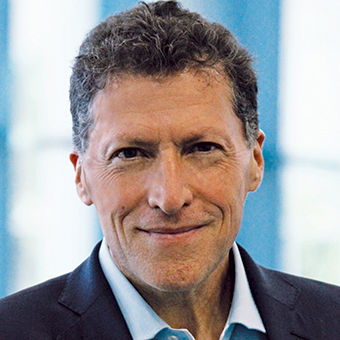
Today, MMGY is releasing its updated quarterly “Portrait of the American Traveler,” and the insights it provides are at once hopeful, surprising and, in some cases, concerning. It’s a portrait that’s one part “Washington Crossing the Delaware,” one part “Mona Lisa” and one part Dorian Gray.
First, George Washington. Despite a lingering global pandemic, inflation, rising fuel prices and supply chain issues, an increasing number of American travelers perceive international travel as safe, jumping seven points from a year ago, to 49%.
The number of those who are more likely to cross the Delaware state line than an international border (as regards perceived safety) rose only three points in a year, but domestic travel was already at a high level, moving from 67% to 70%.
Air travel, relative to car travel, made gains, though barely above the survey’s 1.6% margin of error: 42% of travelers plan on flying in the next six months vs. 40% last year. However, those planning a car trip dropped four points, to 54%. It may be that this was impacted by rising prices at the pump when the survey was fielded in February, but before people connected higher fuel costs with potential increases in airfares.
If you were to imagine a traveler standing at the bow of Washington’s boat, you’d want to picture a much younger Washington. Gen Zers are considerably more likely to take frequent trips over the next six months: they’ll take five to boomers’ 3.4 (the number steadily decreases with age in regard to millennials and Gen X).
But as you ponder the river-crossing image, picture boomers at the bow of an oligarch’s repossessed superyacht. While the Gen Z traveler plans to spend only $293 per trip, the boomer plans to part with almost four times the amount: $1,142.
(OK, maybe not a superyacht.)
It occurs to me that, while the Great Resignation has exacerbated job shortages, the leap in early retirement among higher-spending boomers may give the industry a significant lift for decades to come — remember, the youngest boomers are still in their late 50s.
The traveler also has Mona Lisa’s enigmatic qualities. Looking at the top of the travel-planning funnel, when travelers are seeking ideas and inspiration, the vast majority of information sources, from friends and family to advertising to suppliers themselves, fell over the past 12 months, as did the average number of sources consulted. Those that didn’t fall — television advertising and information directly from suppliers — didn’t rise, either, but stayed steady.
If that’s a mystery, consider this: When presented with a list of sources (more than one could be checked), people ticked “friends and family” most frequently. That source did drop six points over the past year, from 53% to 47%, but remained well above No. 2, travel review websites, which polled at just 24%.
But when asked specifically whether they trusted online reviews more than the opinion of friends and family, 44% said yes. So apparently, while 47% will ask family and friends, a significant number don’t actually trust their opinion over an aggregation of strangers.
Like Dorian Gray, there’s an aspect of the American traveler that wants to present one image to the outside world but whose behavior belies that image. A significant number of active leisure travelers, 81%, say they’re willing to change travel behavior to reduce impact on the environment. The sentiment shows high support across age demographics, with millennials and Gen Z leading the way with 90% and 89%, respectively, and Gen X and boomers coming in with respectable 79% and 72% pro-sustainability sentiment.
But will their actions back their words? The number who are willing to put their money where their mouth is is, frankly, feeble.
How many would pay a $5 per night hotel fee to fund an environmental in-destination sustainability program? 21%.
How many would pay a 1% restaurant tax for the same purpose? 20%.
I suppose you could call it progress that these numbers rose from single digits in 2018, but I find it pathetic, particularly so because those who can most afford it — boomers — are the least willing to pay, with only 12% asserting they’d pay the hotel fee and 15% the restaurant tax.
We live in dynamic, fast-changing times, and the service life of some traveler-sentiment survey responses falls somewhere between a soufflé and a TikTok video. This survey was fielded in February, before the Russian invasion of Ukraine and the spread of the omicron subvariant.
Still, despite a rollercoaster year, taking travelers’ pulse every three months has yielded surprising consistency regarding intention to travel within the next six months: the quarterly numbers, beginning with February 2021, are 72%, 73%, 71% and 73%.
The stability of these numbers suggest not so much a portrait or quarterly snapshot but an inborn spirit not easily deterred by threat. Sticking with a fine art metaphor, in this regard the American traveler is Michelangelo’s David, resolutely facing Goliath-like challenges.
Source: Read Full Article










